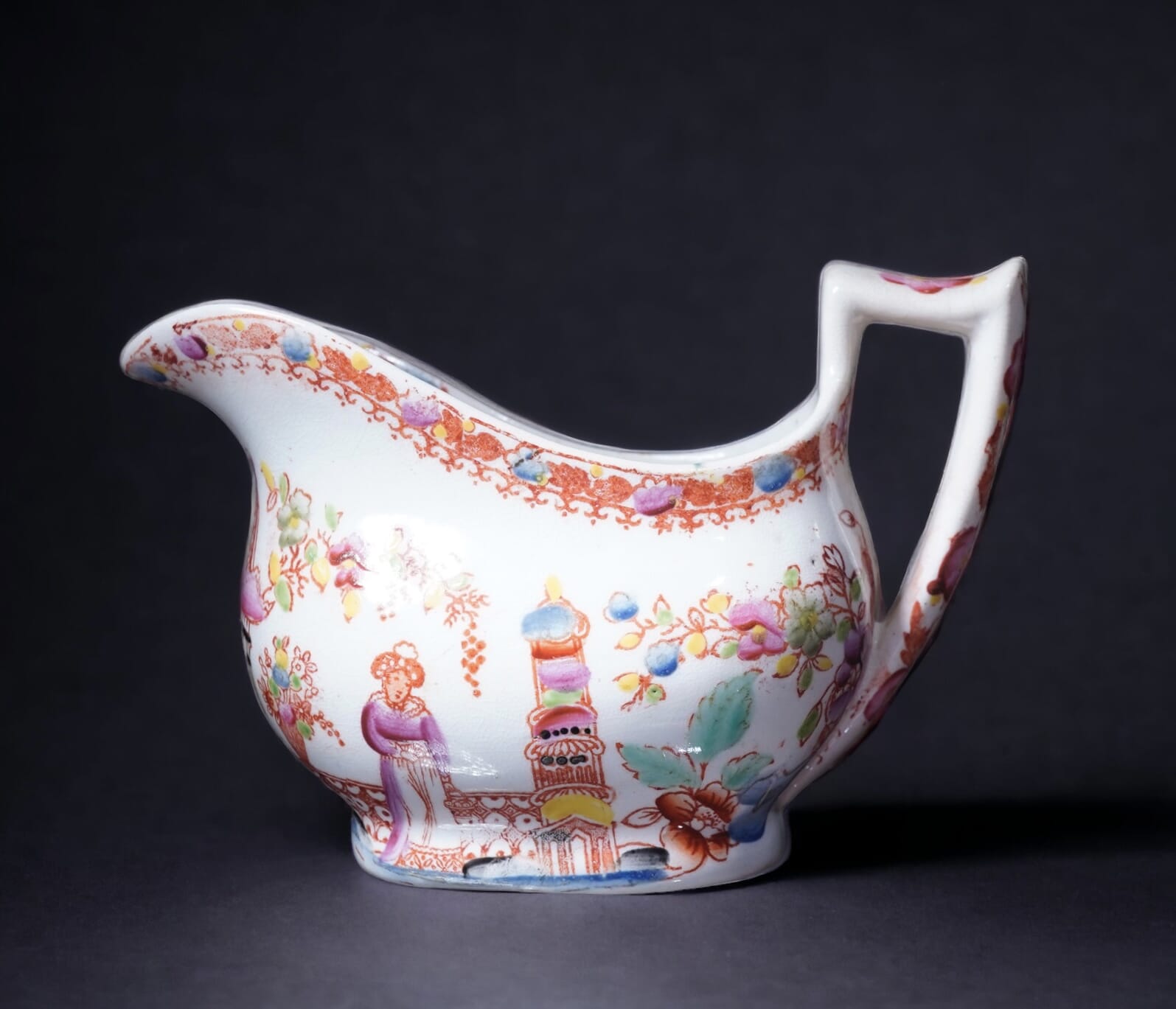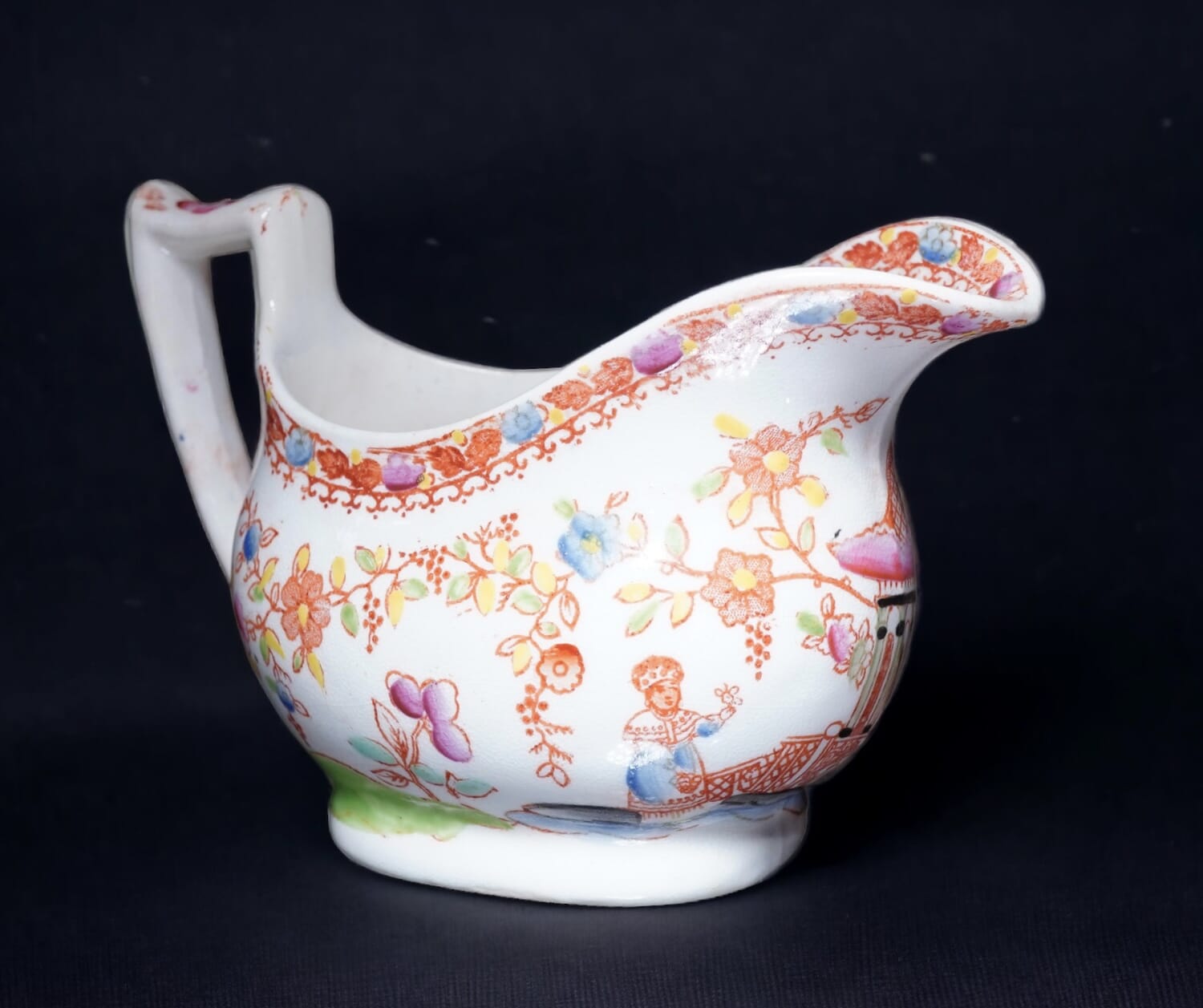
An interesting rarity has just been unearthed at Moorabool.








Godden in his ‘Staffordshire Porcelain’ is the initial source of attribution, using the style of piece & pattern to date it to the 1820’s, and then refine it down to two possible makers with ‘D’ surnames. Drewry- also spelt Drewery – is the most likely of the two, in his opinion. They are recorded in the directories 1818, and disappear after the 1830 publication. Godden illustrates the London-shape teapot with the same pattern and ‘D’ mark on p415. Distinct to this maker (apparently not found elsewhere) is the plain handle form, without a spur on the inside towards the bottom; also distinct is the handle wrapping down the body and terminating by touching the actual foot of the jug.
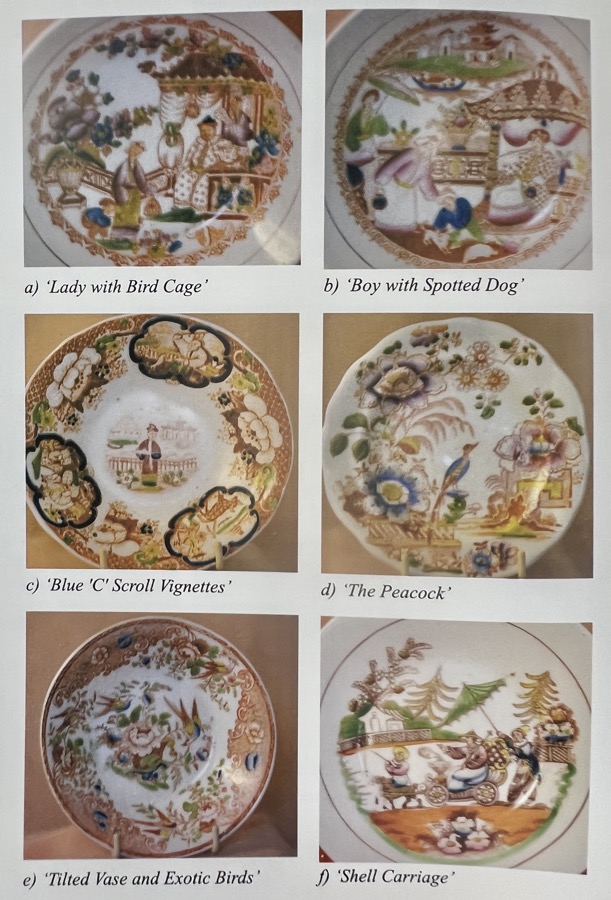
A selection of similar patterns, made by the Hilditch firm. These are identified by marked examples, set out in a 2003 publication, ‘Hilditch Porcelain – A Collector’s Guide’ by Margaret Hewat & June M. Owen.
The similarity to the Drewry pattern is no coincidence; the Hilditch works were located in Lane End, Staffordshire, just over the road from the Drewery works. The engraver responsible for the copper plates used to print the transfer was not exclusively employed by these companies; rather, he would be a freelance operator, taking on the work when it was needed. Somewhere like Drewry would not need his services very often – this was pattern 65, and such printing plates could stay in use for many years before needing replacement. If you examine the details of the prints of these Hilditch products, and the other similar works such as Newhall, it is clear that the same engravers are at work for multiple firms – making this marked example an important clue to unravelling the correct attribution of these charming transfer printed wares.

“The numerals “44” alongside the “D” mark are more likely a worker’s number than a pattern number”.
We propose that it is indeed a pattern number, and should be read as ’77’ – see image below for the pattern.
This pattern is recorded by the Transferware Collector’s Club database as pattern #2552, titled ‘Pavilion & Tower’ ( no. 65) by Thomas Drewry & Son, Lane End, Staffordshire. A related pattern is their #3327, a pattern known as ‘Tea House’ (See photo below). In the documented example, there is a number next to the mark – as there is with this example & others of this pattern that have been recorded, all ’65’. Clearly this is the pattern number for this pattern, 65.
The numbers on the ‘Tea House’ example are interpreted as ’44’, but seem to more likely be meant as ’77’ – just a few patterns along from this ‘Pavilion & Tower’ pattern. Comparing the two reveals a very close look.
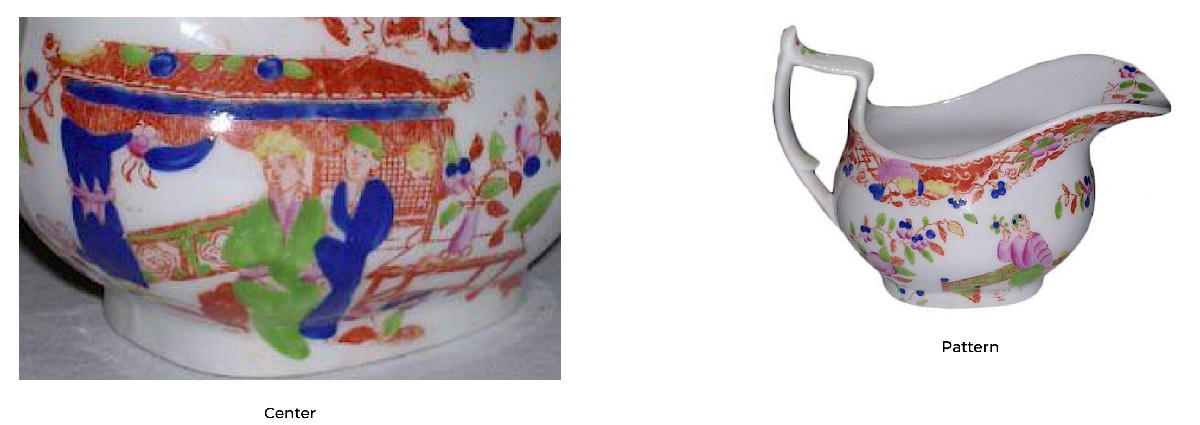
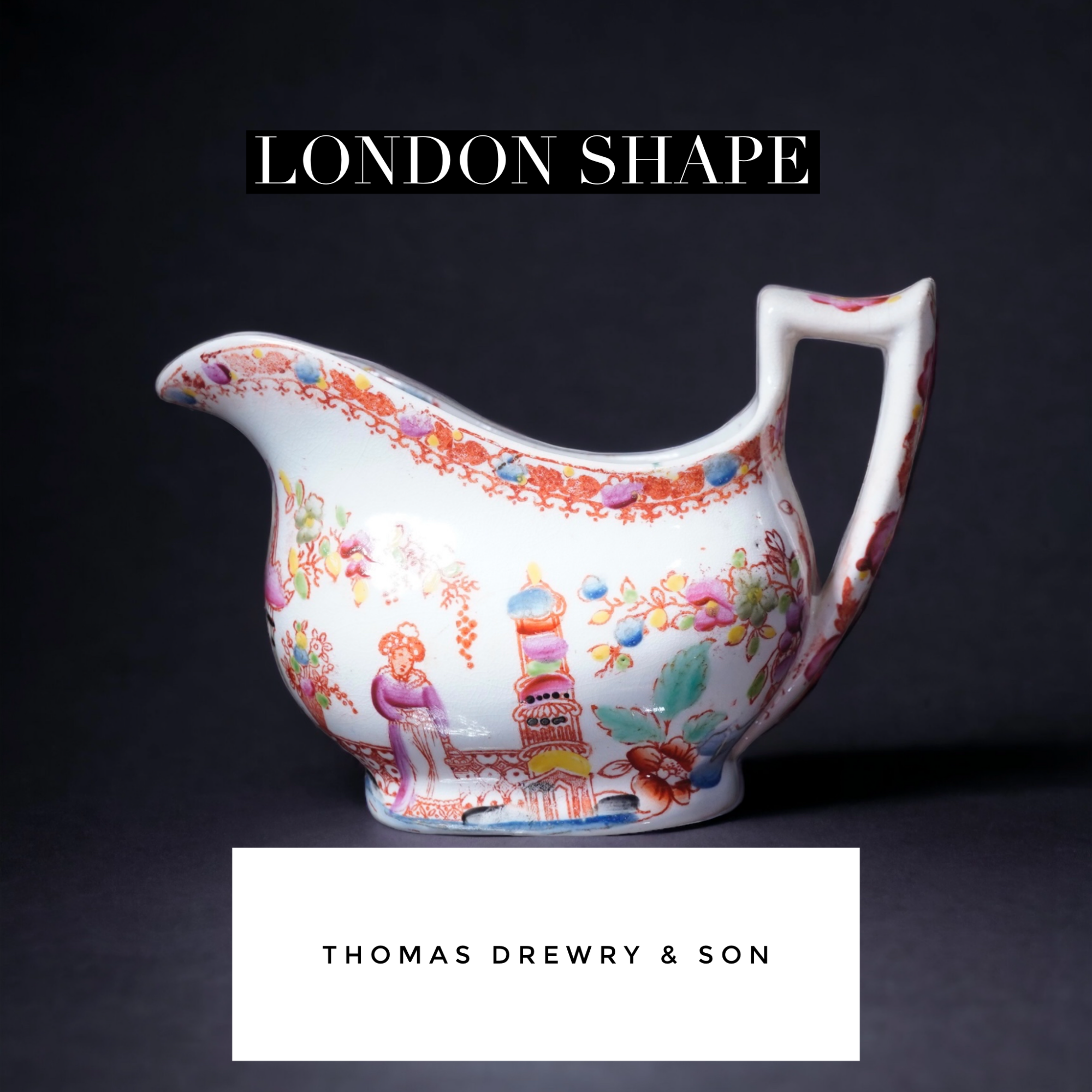
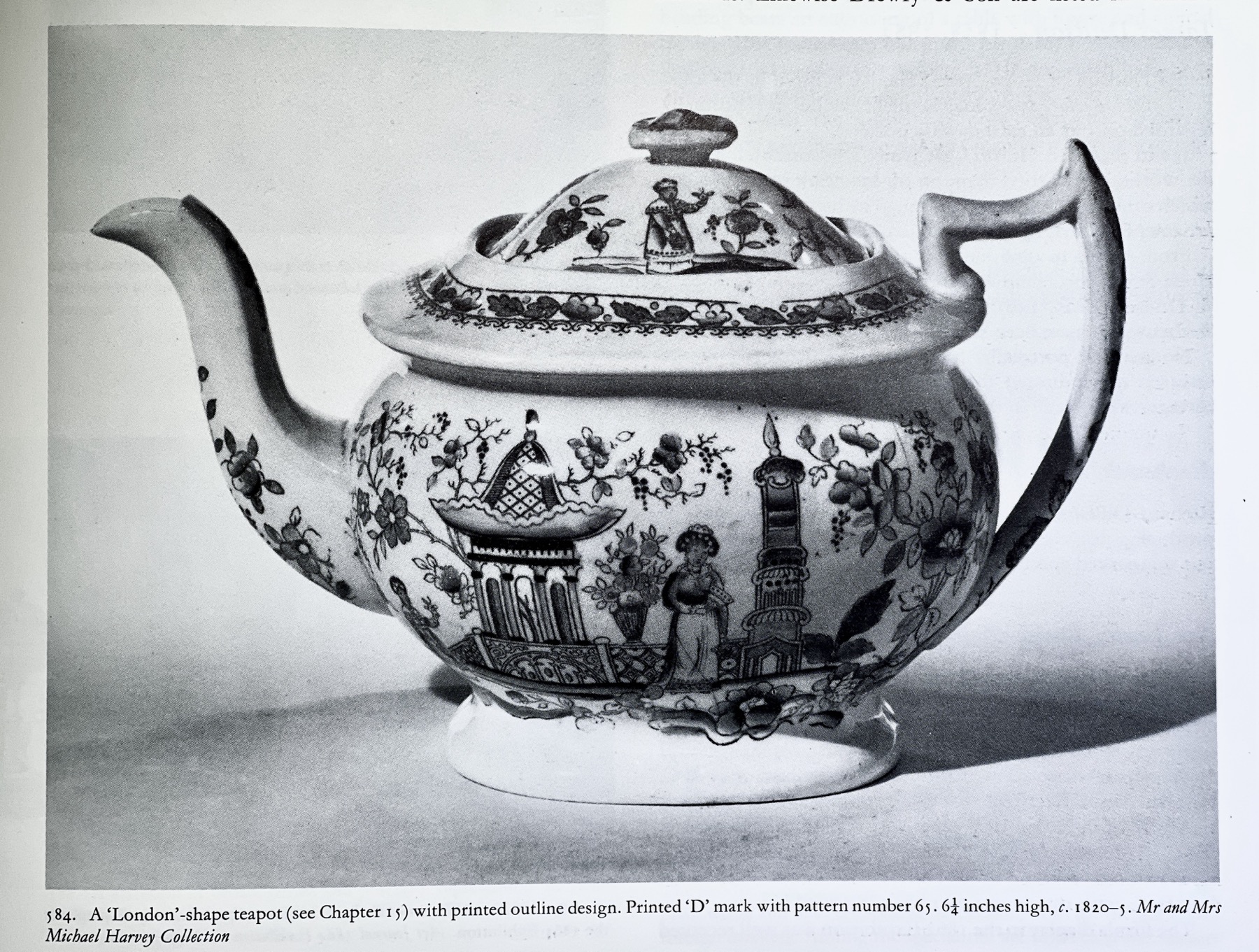
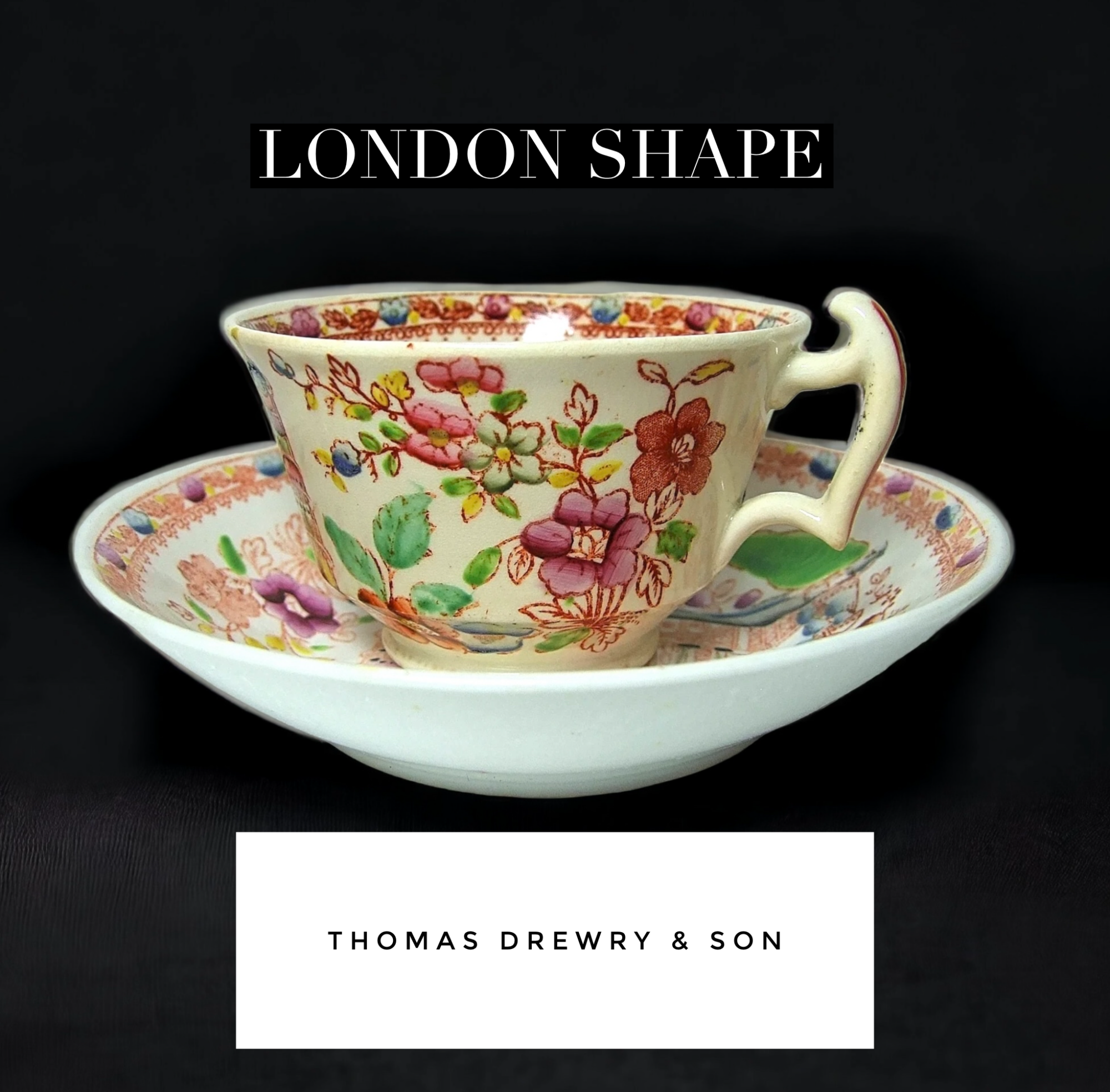
This piece is a fine example of how time disappears in this field: unravelling the above story took quite a while, with widespread resources to consult and bring together to tell the story. And yet, look at the price: Rarity doesn’t necessarily mean ‘expensive’ !

